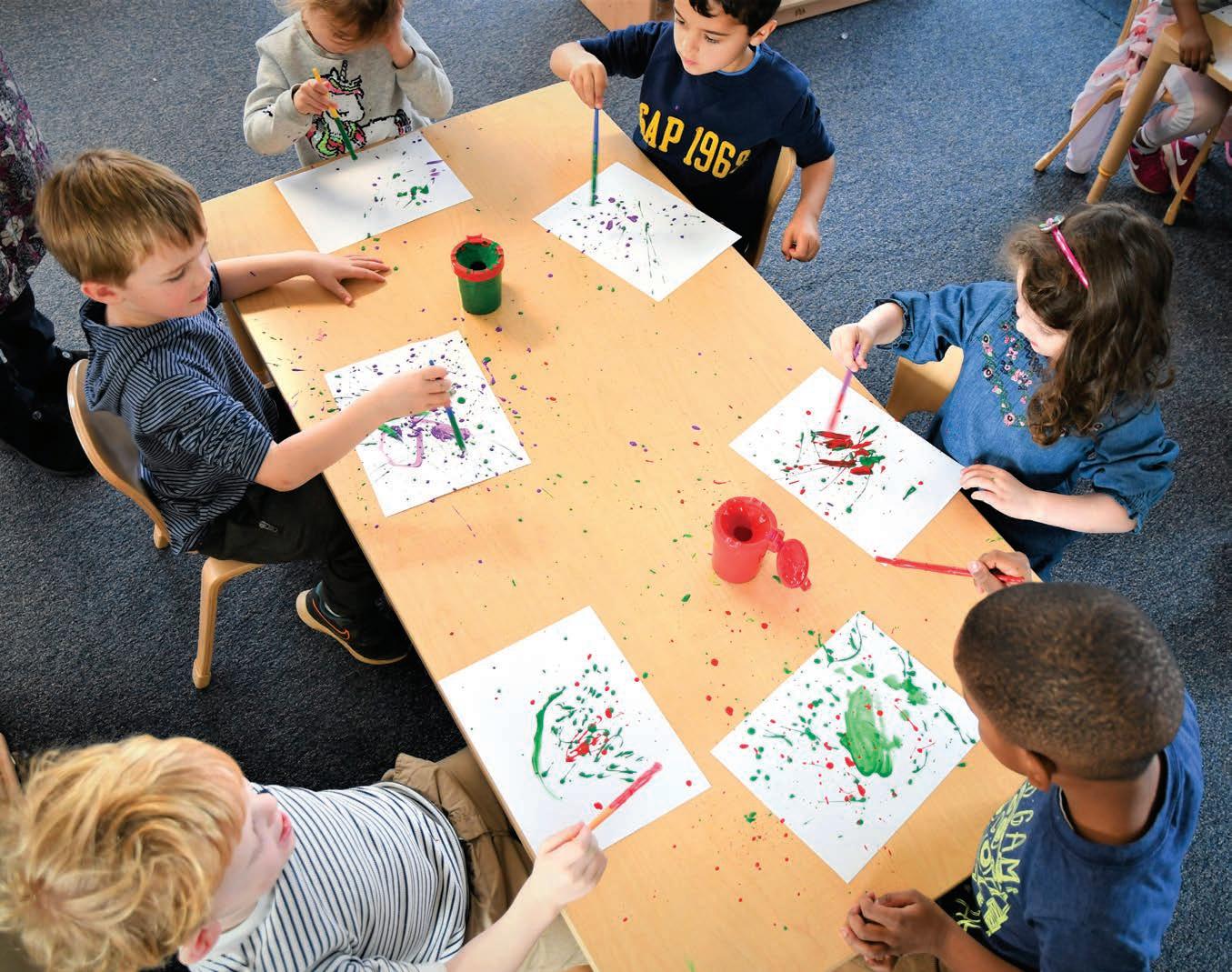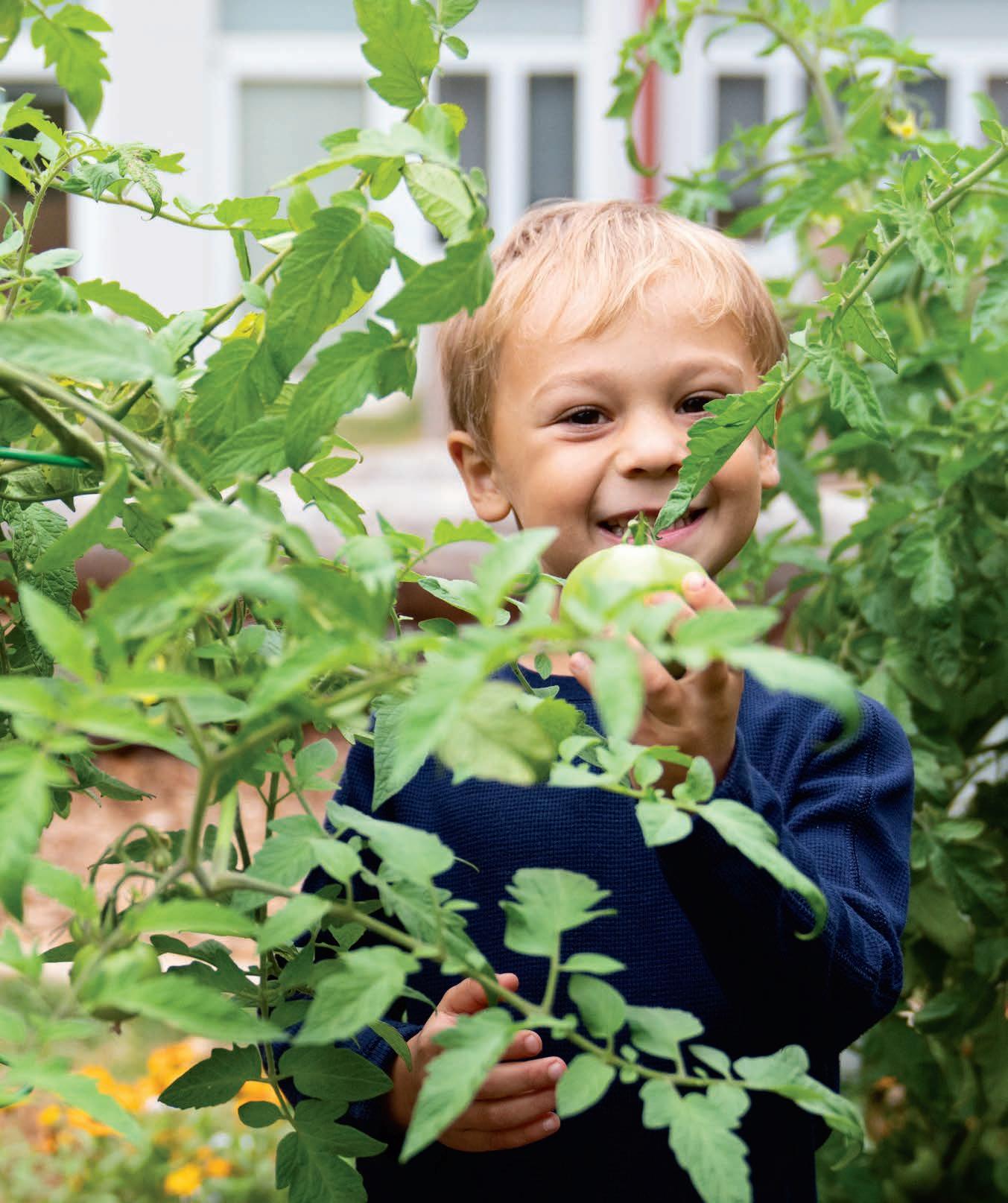
 Head of School
Matthew A. Gould, Ph.D.
Head of School
Matthew A. Gould, Ph.D.


 Head of School
Matthew A. Gould, Ph.D.
Head of School
Matthew A. Gould, Ph.D.
The benefits of strong communication skills, particularly in the area of public speaking, are enormous—and can pay huge dividends in all areas of our lives. Follow along on Norwood’s public-speaking journey, grades PK-8, to see how students are empowered through the art of public speaking.

Norwood has long been a leader in educational technology, even before introducing a 1:1 laptop computer program in the Middle School in 1998, one of the first in the country. Now, more than 20 years later, learn how the School is researching technology use and applying this knowledge to identify best practices for the future.
A major focus of the Diversity Leadership Council during the 2019-2020 school year is to build a strategic and collaborative anti-bias framework, providing teachers with tools and resources for ensuring the most inclusive, equitable, and respectful learning community possible.
While studying for his Ph.D. in computer science at the University of Oxford in the United Kingdom, this Norwood graduate demonstrates how being immersed in a world of intense academics doesn’t have to mean missing out on intense fun.
February 8, the Norwood community turned down the lights and turned up their support for the school we love! The 2020 Auction delivered a fun new format and generous contributions towards student financial aid and faculty professional development.
Greetings from a very quiet Norwood School campus. The entire Norwood community—near and far—has been in my thoughts during this time of unprecedented challenge. Wherever you are, I hope you are healthy and well. I hope your family and friends are feeling connected and safe.
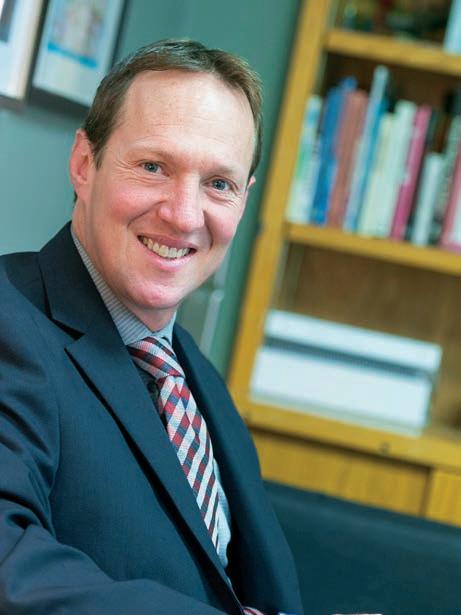
This letter isn’t the first I have written for the spring issue of the Norwood Magazine. My first version, written prior to the COVID-19 outbreak, was full of good news and exciting stories about the abundance of child-centered teaching and learning going on at our school during this busy time on campus: learning showcases, spring performances, experiential trips, Field Days, our spring alumni reunion, professional development work, and more.
And then the coronavirus pandemic presented a very different and frightening story for our community, our nation, and our world. I was able to pull my first letter days before the issue was scheduled for delivery to the printer and replace it with a version that is reflective of the situation as it presented in early April. The remaining pages of this
magazine were prepared prior to COVID-19 and do reflect the amazing work of our teachers and students when we were together on campus. We have a great deal of good news and exciting stories to share, and I hope you will take it all in as you peruse the pages of this issue. We can all use a heavy dose of good news right now, that’s for sure.
Like schools throughout the country and world, our beloved campus is currently closed with no plan to open prior to April 24. But I assure you that Norwood School is very much open in the hundreds of homes of our faculty, staff, and families. After an extended spring break in mid-March, we launched our Distance Learning Program on March 31. During the two-week break—a time typically used for rest and rejuvenation— our faculty and staff immersed
themselves in careful, intentional, and creative preparation of virtual classrooms that are reflective of the happy, collaborative, challenging, and supportive learning community our students know on campus. Each day begins with chapel and a lesson about our Value of the Month, and each day is filled with the shared experiences, play, friendship, and joy that characterize the daily life of Norwood School.
It’s worth noting that a primary reason we were able to pivot to distance learning as quickly and smoothly as we did is the strength of the technology program at Norwood. Our school has long been a leader in educational technology and, as you will read on page eight, we continue to build on this strength as we explore how to best use technology both in and outside of school. This incredible school asset— and a tech team that has worked around the clock these past few weeks—provided a solid foundation on which to build a powerful and innovative remote learning experience.
As we settle successfully into distance learning during this time of uncertainty and immense challenge, I am certain about three things.

1. Norwood School will continue to deliver on its mission to inspire confident, compassionate, independent, and creative thinkers who embrace lifelong learning.
2. Norwood faculty will continue to make special connections with individual students as they teach with purpose, creativity, flexibility, and the knowledge of what each student needs to succeed.
families has been incredible. And the monumental work and dedication of our faculty and staff to create a remote learning program that reflects the Norwood experience is nothing short of extraordinary.
3. The Norwood community will emerge from this crisis stronger and wiser than ever. Since its beginning nearly seven decades ago, the “Norwood difference”— what makes this school truly special and unique—is its caring community, a community where children come first, no matter the situation.
Additionally, whether we are together on campus or apart, we will provide meaningful time for joyful celebration and recognition of the Class of 2020, and we will do our best to preserve the special traditions that mark the end of the school year, including a way to honor and thank five longtime faculty members who are retiring in June: Jane Martens, Lulito Newsome, Lynda Saelens, Jorge Somarriba, and Sue Gail Spring. It is difficult to imagine Norwood without these talented educators, and we hope to host a proper send-off in the near future.
These are unsettling times, but our school community has demonstrated profound strength and resilience in the face of this worldwide pandemic. The support, flexibility, and patience of our
By the time this magazine reaches your mailbox, I don’t know if we will be back on campus or still engaged in distance learning. I do know, however, that Norwood School will continue to prioritize the health and safety of our faculty, staff, families, and the local community, while ensuring the continued education of its wonderful students. Thank you for everything you have done in your lives to combat the spread of the virus. Please stay safe and keep in touch!
With my very best wishes, Matthew A. Gould, Ph.D. Head of School
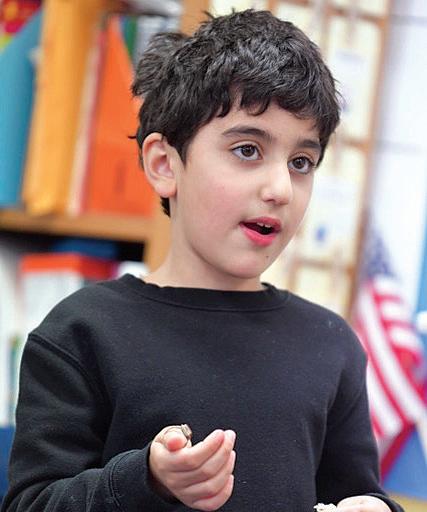
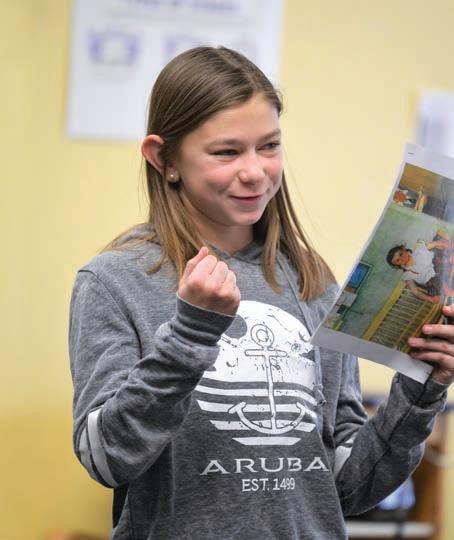
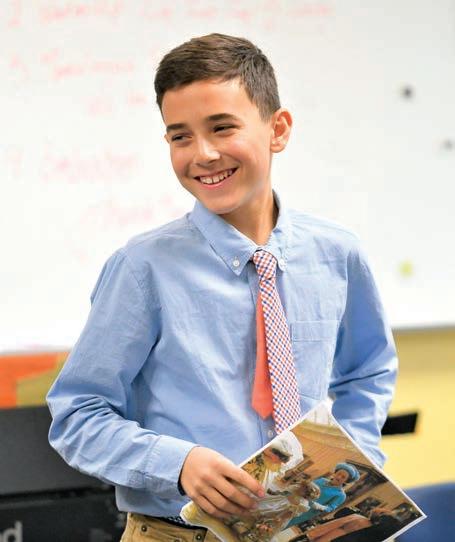

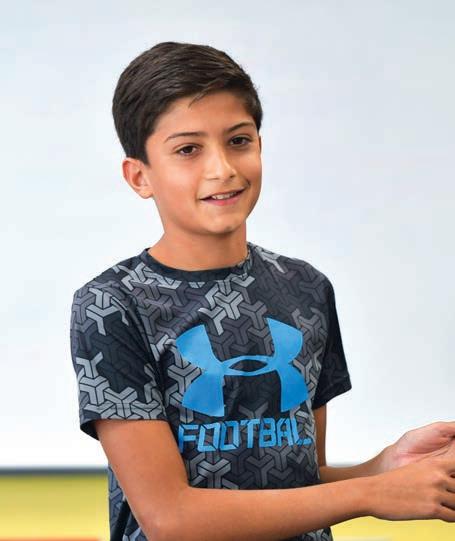

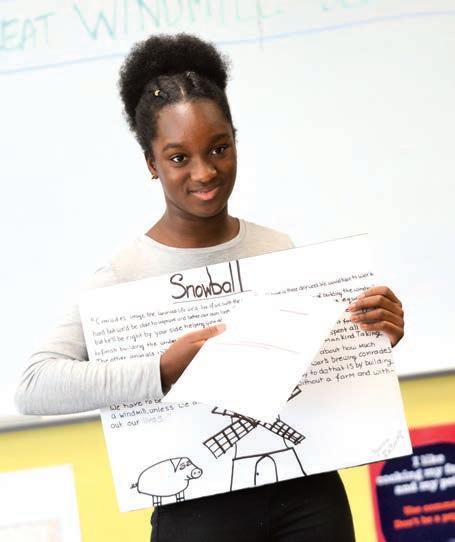
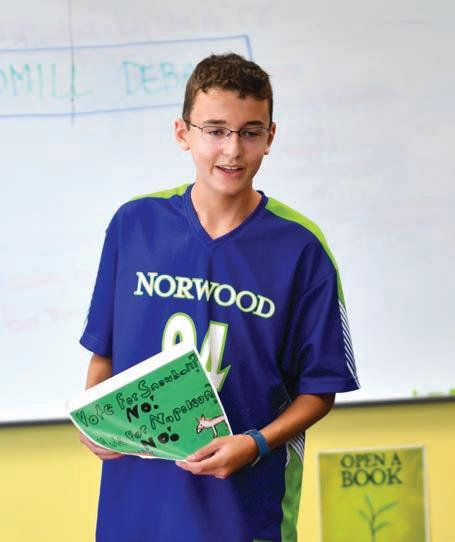

The benefits of learning to speak confidently and persuasively in public at a young age can pay huge dividends in all areas of our lives as we get older P ublic speaking improves communication skills, increases self-esteem, develops the power of persuasion, helps us to be more comfortable with people, and empowers us to advocate for ourselves. Additionally, when frequently exposed to public speakers expressing different viewpoints and perspectives, we become better and more empathic listeners.
At Norwood, children are exposed to public speaking experiences beginning in pre-kindergarten. “The earlier you begin this work—ideally before fear and selfconsciousness set in—the better,” says Mike Risen, head of lower school. “Some children take to it naturally, while others build their public speaking confidence over time. The important thing is that we provide intentional and consistent public speaking experiences that build and deepen throughout a student’s time at Norwood.”
Follow along on Norwood’s public speaking journey, from pre-kindergarten to eighth grade, where children are guided through a variety of unique age-appropriate public speaking experiences designed to turn what is often considered one of life’s greatest
fears into something that is normal and natural in all areas of their lives. Check out this small sampling of public speaking experiences provided in each grade.
“We definitely do our own version of public speaking in our classroom,” said pre-kindergarten teacher Rachel Siegel. “In fact, we do it every day.” At Morning Meeting, children are given the opportunity to share something they have created or worked on during the Morning Investigations block. “It might be a story, drawing, painting, or some kind of discovery,” Rachel explains. “Typically, the pre-kindergartners will choose to stand up
in front of their peers and share something about it. I love to see the pride spread across their faces when they confidently share a piece of themselves with the class. This is a wonderful introduction to public speaking because it happens in a safe, familiar, and nurturing environment. We’re all very supportive of one another.”
Speaking about something you love and feel connected to is a great way to build confidence and comfort with public speaking. In kindergarten, students take home a “sharing box” in which they place an item that relates to a specific classroom theme, such as “what I want
to be when I grow up,” or a hobby, talent, or adventure. Students then stand in front of the class to deliver three clues about their sharing box item. Once a classmate has guessed what is in the box, the presenter talks about the item and answers questions. This version of “Show and Tell,” which happens three times a year for each student, teaches children to think creatively, express their ideas, and use descriptive language while experiencing an audience listening to them speak about something important to them. This activity also allows kindergartners to work on active listening skills and ask relevant questions.
As our first graders’ perspective on community begins to widen (from family to school to town to city), they study Washington, D.C. in social studies, including a unit on the importance of preserving history through memorials and monuments. To deepen this understanding and to practice their public speaking skills, students bring in a family heirloom or special item from home to share with the class. As they stand in front of the classroom for anywhere from five to 10 minutes, each presenter explains why the item is significant and how it preserves their unique family history. First graders practice using a clear voice that everyone can hear, organizing their thoughts, and managing an enthusiastic question-andanswer session with peers. “After learning about their keepsake from family members at home, our first grade speakers excitedly share the importance of their item with classmates,” says first grade teacher Sue Tischler. “And our listeners, who are genuinely interested in learning more, ask lots of great questions.”
Second grade reading and language arts class incorporates a fun way for students to exercise their public speaking muscles. Called “Chair Shares,” these opportunities often come in at the end of class when students are invited to step up on to the class chair, face the class, and “share out” something they have learned in class. For example, after a lesson on literary language and looking at how language is used in playful ways, students spend time reading independently and marking parts in their books where literary language is used. “At the end of the class, we ask for volunteers to share their finds with their classmates,” says Jeanne Simons, second grade homeroom teacher. “They confidently stand on the chair and share out with a loud, proud voice. Later in the year, we will include Chair Shares in writing class as students compose pieces of poetry using onomatopoeia, five senses, and patterns. Second graders love sharing out their inventive use of language!”
Small group book discussions in reading class are an effective way for third graders to feel comfortable expressing their opinions and ideas, as well as responding to the opinions and ideas of others. The goal in these groups of three or four students, according to reading and language arts teacher Tyffany Mandov, is for everyone to contribute. “These mini book clubs are just as much about how to have a discussion as they are about exploring the shared book. The goal is for every member to contribute and for the conversation to help the participants develop an idea together by listening and responding to each other. It’s such a joy to hear the kids ask each
other, ‘Do you have an example?’ and ‘Can you say more about that?’ The conversation ends up going back and forth with speakers gaining more and more confidence in expressing their thoughts.”
Part of being an effective public speaker is being comfortable in front of a large audience and knowing how to lead a conversation. Fourth graders practice these important skills by participating in a new chapel presentation series called “Between Two Flags.” Several times a year, fourth graders volunteer to interview a faculty or staff member live “on stage” in front of the entire lower school community. Interviewers must come up with the questions, respond to the participants’ answers, and keep the conversation flowing. Additionally, the interview is filmed, which for some can be an added source of discomfort. “I’m always amazed at how poised our fourth graders are during these interviews,” shares Mike Risen. “They appear to be completely unfazed—even with a large audience and a video camera in front of them.”
An ancient Greek Agora, or meeting place, sets the stage for one of the signature public speaking experiences in fifth grade social studies. As part of their unit on ancient Greece, students take on the persona of a merchant, artist, philosopher, scientist, politician, or other Athenian citizen who would have attended a bustling agora in ancient times. Standing in “stalls,” which are situated throughout the fifth grade classrooms and hallway, fifth graders welcome visitors (parents, peers, teachers, and staff) to the agora and stay in character
matthew gould, head of school:
“Public speaking is one of the most important life skills, and in fact some consider it to be one of the most desirable qualities in the workforce. Giving children a myriad of opportunities to learn and practice in a safe, supportive, and respectful environment is an ideal way to develop this empowering skill—and that’s exactly what we do at Norwood. It ’s truly amazing to watch our students grow in their ability to communicate with confidence and at a more sophisticated level as they move along the Norwood journey. The Class Day speeches are the perfect testament to this growth, and every year I am in awe and full of pride.”
as they deliver a speech about who they are and the reason for their attendance at the gathering. Fifth graders learn the importance of identifying and delivering key message points when there is a limited amount of time to grab someone’s attention. They also see impact of a visual aid when delivering a sales pitch.
“Among the many challenges that await our students in Middle School is the opportunity to make a chapel presentation to fellow students,” says Michele Claeys, associate head of school and head of middle school. “This long-standing tradition at Norwood is an excellent way to practice the art and skill of public speaking.” Each sixth grader selects a topic that has significance and meaning to them—a person they hold in high regard, a hero or valued role model, a life experience or hobby, or a current event—and creates a presentation, often with PowerPoint, to deliver during fifth and sixth grade chapel. “This is a big deal for many of our sixth graders, and our goal is to make sure they feel comfortable and confident. The speakers also have to be
prepared to answer unscripted questions from their audience, and sometimes that’s the most impressive feat!” Michele adds. “But the best part is seeing them beam with pride—and sometime relief—when they are finished.”
Reciting a poem can be a powerful experience for a speaker. Poems can inspire the soul, touch the heart, and fuel the imagination. They also encourage the speaker to use creative expression, pay attention to the sound and rhythm of their voice, and be aware of gestures and facial expressions that build a connection with an audience. In seventh grade English class, students select and recite a poem from the “Poetry 180” program created by Billy Collins, former Poet Laureate of the United States, which encourages students to read a poem on each of the 180 days of the school year. Poetry recitation is especially useful when training speakers to work on strong verbal expression through use of voice, volume, inflexion, pitch, pauses, and speed. After reciting their chosen poem, students become instructors
as they teach the poem to the rest of the class, commenting on meaning, figurative language, rhyme scheme, word choice, repetition, and alliteration.
By the time students reach their eighth grade year, public speaking is experienced in every subject area—from presenting on their research paper topics in history to explaining a solution to complex problem in math to describing a hypothesis and predictions in a science lab. In English class early in the fall, eighth graders explore the power of persuasive speech. After completing George Orwell’s classic novel, Animal Farm, students are tasked with writing and delivering a persuasive speech that uses a variety of rhetorical devices to enhance their viewpoint—techniques like irony, hyperbole, alliteration, metaphor, simile, euphemism. To demonstrate their understanding of the visual and auditory power of language, students also enjoy creating propaganda posters in attempts to sway their audience.

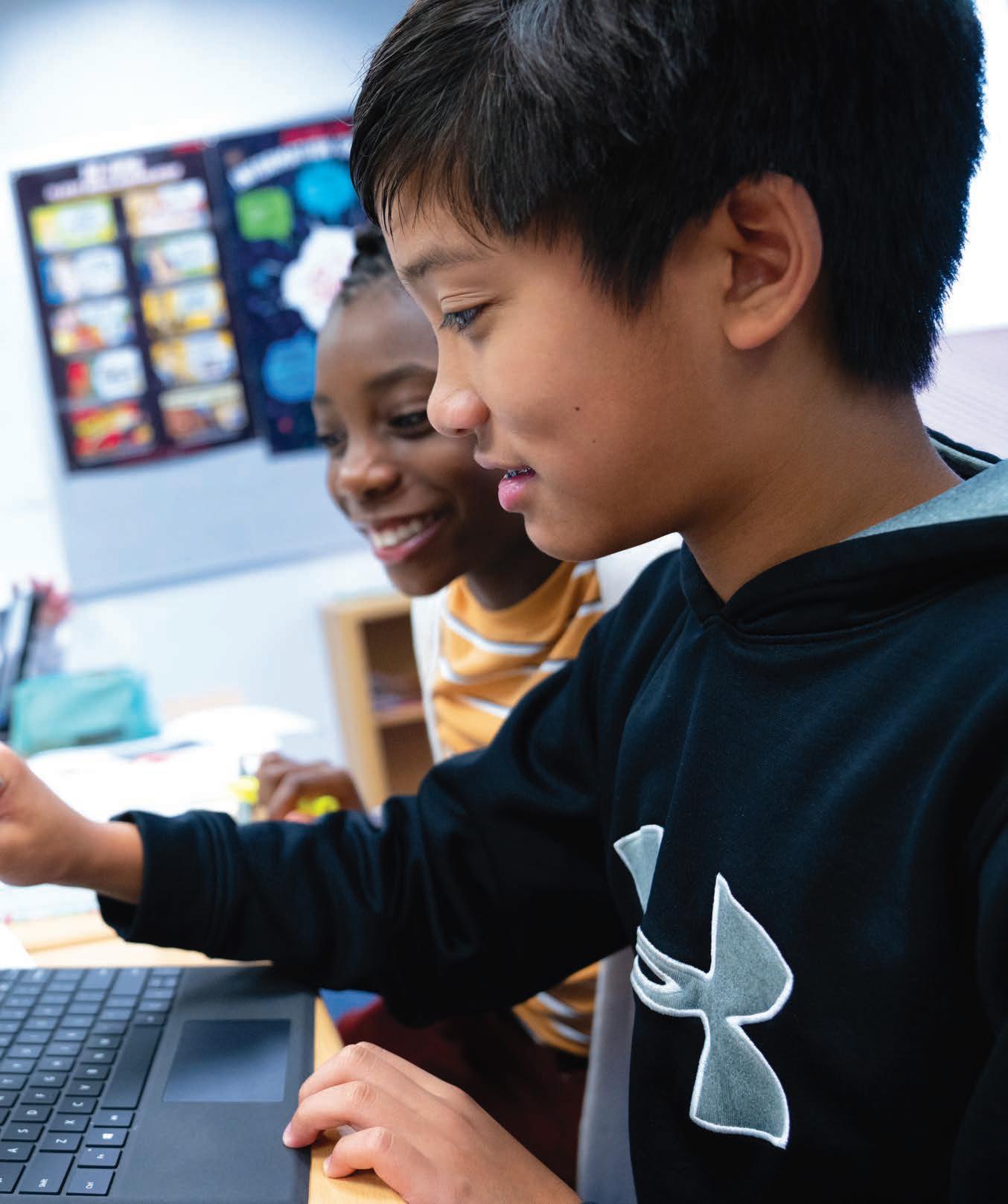
Norwood School has been a leader in educational technology for decades, even before introducing a 1:1 laptop computer program in the Middle School in 1998, one of the first in the United States.
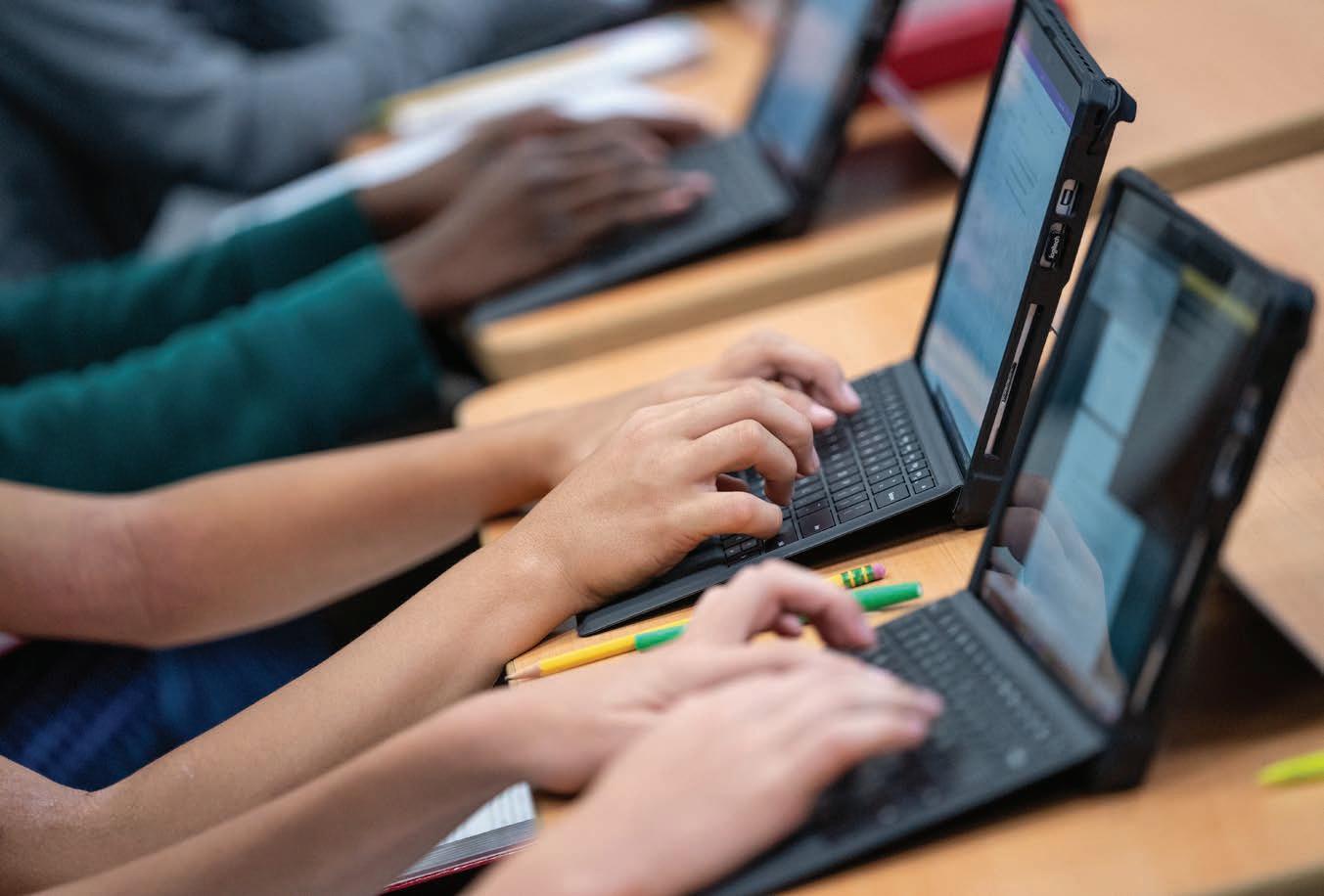
Today, the School incorporates countless technologies and technology-related practices into teaching and learning, including online research; writing, revising, and publishing; graphic design and filmmaking; internet safety; coding; technology-based practice in math, world language, music, and keyboarding; a whole host of faculty, student, and parent communication practices; and the HawksNest learning management system, just to name
a few. The Norwood community benefits from a terrific technology department, library and media staff, regular training for faculty and students, and workshops for parents.
Technology plays a different and more expansive role in our lives—and in our students’ educational experience—since tablet computers became as common as books in Norwood’s classrooms more than 20 years ago. It is a powerful, nearly ubiquitous tool for learning, exploring, connecting, communication, entertainment, and commerce. With that in mind, Norwood launched a new initiative this year to review current technology use and to consider best practices given that technology use has become such an integral part of students’ lives both in and outside of school.
A Technology Use Task Force, led by Associate Head of School and Head of Middle School Michele Claeys, was formed to review current use and to determine best practices for Norwood. “Our goal is to review research, solicit input, and share findings and recommendations with the administration as the School considers how best to match student technology use with our child-centered mission,” explains Michele.
In January, all parents, faculty, and students in grades 5-8 were asked to complete a technology-use survey to help the task force to gather information about students’ interaction with technology both at home and at school. After reviewing and assessing the survey results and related research, the task force will focus its recommendations in the following five areas:
1. Developmentally appropriate technology use and instruction at school
2. Safety, mental health, and social-emotional well-being
3. Doing good work while managing distraction
4. Thoughtful, timely teaching of handwriting and keyboarding
5. Technology trends and training for faculty and parents
“Finding the right balance is key to our work: learning new technologies, including coding, but not letting go of all the benefits that come with other educational and artistic tools, reading books, and healthy interpersonal communication skills,” Michele explains. “And, of course, the overarching concern throughout all of this work is safety and the powerful influence technology has on mental health and wellbeing. The task force has a lot to consider, and we’re excited to dig in to identify the next steps that will ensure continued success for our students.”
“Anti-bias education is a way of teaching that…helps children learn to be proud of themselves and their families, respect a range of human differences, recognize unfairness and bias, and speak up for the rights of others.”
- derman-sparks and edwards, 2010

In their book Anti-Bias Education for Young Children and Ourselves, Louise Derman-Sparks and Julie Olsen Edwards write about the practical steps we can take to address bias and help students thrive. At Norwood, we are engaged in a multi-year effort to understand the research around unconscious bias and to build a strategic framework that honors all students, fosters an appreciation for difference, and strengthens our anti-bias school culture. “Bias is a real part of our lives,” says Billy Vargas, Norwood’s director of diversity, equity, and community. “The good news is there are real and proactive ways we can address bias that have lasting positive effects on children as they grow.”
Research shows that there are several ways to address implicit bias in schools, such as:
n Consistently exposing students to counter-stereotypes, diverse perspectives, and a full variety of experiences and narratives;
n Inducing empathy for groups considered “other” and increasing motivation for equity;
n Facilitating inter-group contact, collaboration, dialogue, and personal storytelling;
n Teaching critical thinking skills that incorporate culture and self-awareness;
n Actively promoting an anti-bias school culture by modeling and demonstrating ways to address biased behavior;
n Slowing down, thinking consciously, and utilizing data in decision making whenever possible.
A central aspect of this work is creating the Norwood School Anti-Bias Framework that provides a strategic and intentional approach to addressing bias related to teaching and learning. Using the best research-backed practices and resources, as well as a heavy dose of our own wisdom, the framework will serve as a tool and resource for teachers when considering professional goals, curriculum development, and pedagogical resources. “Essentially, the Anti-Bias Framework recognizes that bias—unconscious and conscious—is real and ubiquitous,” explains Billy.
“The framework allows us to address bias on a school-wide basis and helps to hone our focus and consider practical steps we can take to foster an anti-bias culture in our school.”
Led by Billy and the Diversity Leadership Council (DLC), this comprehensive and collaborative effort involves working with teachers in every grade level and in every subject area to evaluate curriculum and pedagogical resources for possible anti-bias implications. The group is focused on reviewing and mapping curricula that contributes to growing and sustaining a culture of anti-bias teaching and learning. To add clarity and focus to this work, they have identified four areas around which teachers will learn, grow, and collaborate: Identity, Diversity, Equity, and Action.
“It’s a big job,” Billy says, “but the DLC and our teachers have fully embraced the work, and we are all excited to implement a variety of practices and curriculum ideas reflecting the goals of the Anti-Bias Framework in the years to come.”
Promote a school-wide strategic approach to advancing anti-bias practices and curricula.
Foster a positive sense of self among all community members while developing strong critical-thinking and communication skills.
Strengthen student capability for recognizing and addressing bias when it arises.
Help students to gain a deeper and more nuanced understanding of society and to reflect on how to lead lives that matter.
Implicit Bias Research from the Perception Institute and the Kirwan Institute
Anti-Bias Education by Louise Derman-Sparks & Julie Olsen Edwards
Social Justice Standards by Teaching Tolerance
Essential Questions, McTighe and Wiggins
Looking at his academic schedule and demands, you might wonder how Matthew Katzman finds any time for fun. After graduating with both a B.S. and M.S. in computer science from Stanford University, Matthew now attends the University of Oxford in the U.K. where, as a Ph.D candidate, he studies theoretical computer science. Additionally, he is the president of the graduate student community in his department, vice president of the graduate student community in his college (Magdalen), serves as a lecturer at another Oxford college (Jesus), and recently began working with a group of Oxford students on a project to develop a technique that applies machine learning algorithms to liquid biopsies in an attempt to more accurately and less invasively diagnose lung cancer.
Sounds intense, doesn’t it? Matthew’s academic load is intense—it always has been—but he has consistently managed to work a lot of fun into the mix. Read on about the fun he found playing trumpet in the marching band at Stanford and along muddy obstacle courses in the U.K.
Throughout your intensive studies at Stanford and Oxford you have found some unique—and fun!—side activities, like participating in the marching band at Stanford and Spartan Races at Oxford. How do you find the time?
It’s certainly difficult, but it’s a good lesson in time management. I really enjoy having the opportunity to participate in so many unique and varied experiences, so I have to make sure that I spend my time productively. Throughout Norwood and beyond, I adopted the mindset that spending every available moment working was much less effective than planning ahead and developing a targeted approach to ensure that the work I put in is all focused.
What intrigued you about the marching band at Stanford?
When I first left for Stanford, I was completely disinterested in having any association with the marching band.
I had begun playing trumpet at Norwood, continued throughout high school (Sidwell Friends), and wanted to continue at Stanford in the wind ensemble. With its strong reputation for antics, the marching band was too over-the-top for my taste. But after attending a couple of football games freshman year, I saw how much fun the band seemed to be having, and a couple of my classmates in the band convinced me to try out a game. I had to attend a single rehearsal and then they let me join for the full 12-hour gameday ordeal—complete with practicing formations, playing for the tailgates, and ultimately making noise whenever we could fit it into a game break. We played “All Right Now” by Free for every scoring play. I loved it.
The Stanford band has many quirks and prides itself on being an organization within which everyone feels accepted. As soon as I realized this and found a great group of friends within the trumpet section, I
became a “football-season only” member for two years, slowly feeling increasingly confident with my position within the organization. Ultimately, I seized the opportunity to lead the section and have my own impact on the organization.
Favorite marching band memory? Playing the national anthem solo at “Big Game,” the annual football game against Berkeley (Kal, as we call them) as section leader my senior year. Each section had a red costume theme, and nobody was allowed to have even a trace of Berkeley blue (except the national anthem soloist who could wear red, white, and blue). I stood on the field dressed as Captain America (my section dressed as Red Skull) with the entire Stanford band spelling out USA in formation behind me and the entire Kal band surrounding them. Many of my best friends were on the field with me, and even my parents made the trip to California to watch from the stands. It was an incredible experience.
Do you still play the trumpet? When did you start?
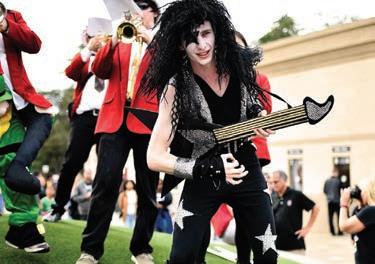
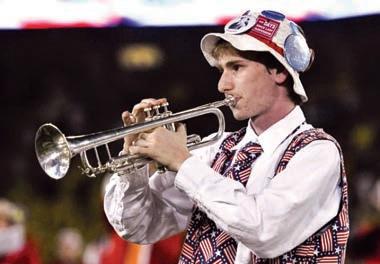
I still play when I get the chance (I even play with the Stanford band whenever I’m back in the area), but unfortunately, I am not currently part of any formal group in Oxford. I started playing in fifth grade at Norwood, when I begged Dr. Lewis to let me move from percussion to trumpet and promised he wouldn’t regret it. I played in various ensembles during high school, and continued to take lessons with John Wiggins, the trumpet teacher I met at Norwood, until I left for Stanford. I had no idea back in fifth grade how significantly Dr. Lewis’s decision to let me play the trumpet would influence my life for many years to come.
What’s it like to be a Spartan?
Favorite distance and obstacle? Participating in Spartan races is an extremely exciting and unique experience. While children have opportunities to mess around in the mud and play on the monkey bars all the time, it’s much rarer once you reach a certain age. In late 2018 I began running in the more competitive race heats, and training for those events really made me reorganize my priorities and become much healthier—in activity, diet, and mindset. Every time I reach the start line, listening to the grand speech accompanying the beginning of every race, I feel an unrivaled excitement that I crave from the end of that race until the start of the next one. It’s an amazing community and I’m so thrilled to be a part of it.

I would say my favorite distance is Spartan’s middle distance (the Super, they call it). Although it has recently been shortened, the Super used to be approximately 8-10 miles, with about 25 obstacles scattered throughout, and offers the perfect combination to maximize my competitiveness. I feel that my advantage is I am more successful at the obstacles than the pure runners, and better at running than those who can speed through the heavy carry obstacles. Overall, I think this sport allows me to remain competitive without having to specialize and lose out on the benefits of other exercises. As for my favorite obstacle, I would probably say the multi-rig: essentially playground rings on steroids. It consists of a combination of rings but also ropes, tennis balls, monkey bars, and whatever else Spartan can think of to make you swing across. It took me a long time to master the obstacle, and when I finally did it felt like I had taken a substantial step from amateur to a more experienced racer.
What’s the connection between your love for computer science, marching bands, and obstacle courses?
Computer science, marching band, and obstacle course racing (OCR) can all be viewed as very structured. Yet, in all three, the structure in place leaves room for extreme creativity. Computer science is entirely focused on logic, yet advances in the field come from the intersection of logical thinking and a creative leap. The Stanford band places a strong emphasis on tradition but leaves the right amount of room for
creative growth and change. OCR requires a very structured overarching training regimen, but each individual workout is a creative experiment—some of which work better than others. Each of these concepts drives me to improve in a different aspect of my life, and ultimately lead me to crave the thrill of what comes next.
Advice for Norwood students and young alumni who might think intense academics and intense fun don’t mix?
I would say that it’s all a matter of priorities. There are so many compelling distractions these days, and an incredible number of pitfalls to waste time. I’ve certainly been caught by a number of these myself, but I’m careful to schedule in my work and the other activities that I feel passionately must be included, and whenever I get off schedule, I investigate the cause and reevaluate. There’s a lot of time in the day if it’s managed appropriately, and it requires some sacrifices but it’s usually more rewarding and worthwhile.
For all those pub crawlers out there, what’s your favorite Oxford pub?
My favorite Oxford pub is Turf Tavern, which advertises itself as the place where Bill Clinton “did not inhale” while smoking. It’s the first pub I visited when I came to Oxford, and I have spent time with some great friends there. It also happens to be the closest pub to where I live, so that could have an impact on my feelings as well.
In celebration of the 75th anniversary of the United Nations, the United States Mission to the United Nations (USUN) launched a countrywide art contest for youth between the ages of 13-15. Participants were asked to submit artwork that represents and depicts “The Future We Want.”
Middle school art teacher Eneida Somarriba heard about the contest through Norwood alumna Madeline Ryan ’08, who works for the United Nations. Eneida thought it would be a wonderful opportunity for her seventh and eighth grade students. “I was pleased with the enthusiastic response,” says Eneida. “I recommended that students use digital tools for their graphic designs. All Norwood students learn to use the programs ArtRage and Adobe Photoshop beginning in fifth grade. Students in my seventh and eighth grade classes are particularly skillful when using layers and tools to paint, simplify, and organize their digital compositions. Norwood’s art program prepares students to be creative and resourceful and to successfully tackle this kind of contest and produce outstanding results.”
Amazingly, of the nine finalists selected by USUN staff, three of them were Norwood eighth graders! The selected artwork was displayed for one month in the USUN lobby in New York City. Additionally, three winners will be selected to be individually recognized by U.S. Ambassador to the UN Kelly Craft.
Congratulations to Arielle, Alexa, and Henry, who created compelling
images that communicated important messages about the future they want!
The USUN serves as the United States’ delegation to the United Nations. It was created in 1947 by an act of Congress to assist the President and the Department of State in conducting United States policy at the United Nations.
Artwork by four students, representing both the Lower School and the Middle School, were selected by Norwood art teachers to be exhibited at the AIMS (Association of Independent Maryland & DC Schools) Art Show that ran in the Landow Gallery at Landon School from January 22 through February 2, 2020. The pieces ranged from multi-media sculpture to digital art to drawing on mylar film to collage to scratchboard drawing.
Independent schools from Frederick, Montgomery, and Prince George’s counties, as well as the District of Columbia, were invited to participate in the show. Seventeen schools participated in this year’s event, providing more than 40 pieces of student artwork.
“This was the first time that Norwood has participated in the AIMS Art Show,” said middle school art teacher Marie Darling. “We love to exhibit our students’ amazing work on our own campus, and the art show gave us the chance to expand our audience, while enjoying the art created at other schools in the area.”
A reception was held on the last day of the show at which the Norwood artists and their supporters gathered
to celebrate this exciting opportunity to showcase the individual pieces of art, as well as the overall excellence of visual arts program at Norwood.
Norwood’s fifth and sixth grade choirs, along with select third and fourth graders, performed at the annual Independent School Treble Choir Festival at Washington National Cathedral on the evening of March 3. More than 400 students from independent schools throughout the Washington, D.C. area gathered at this famous venue to perform individually and together as an ensemble choir. “The concert was a fantastic opportunity for our choir students to experience singing in one of the best acoustics in the country!” said Max Nolin, middle school choir teacher, who conducted the students together with lower school music teacher Hannah Epstein.
What would you do if you came across an enormous dragon in the woods? Would you run away in fear? Would you pull out a weapon and fight what you assume to be a fire-breathing, dangerous creature? In the zany village of Veesaldorf, a young girl named Charity does neither. What ensues is a sweet and special friendship that is at the center of this year’s fall play, The Reluctant Dragon, performed on November 22 and 23.
Adapted by Ed Monk from Kenneth Grahame’s beloved dragon classic, the funny and poignant performance shows what can happen when people make assumptions. Once word gets out that a dragon has been discovered living in a cave nearby, the frightened villagers of Veesaldorf enlist the support of their incompetent mayor and her exasperated assistant to protect them from danger. Little do they know that Charity has befriended the kind-hearted dragon whose main interests are sipping tea, eating cookies, and writing poetry.
Knowing that her new friend is in danger, Chastity concocts a plan to protect the dragon, resulting in a staged battle to placate the villagers and show them that dragons are peaceful creatures. Throughout this charming and funny tale, the audience is reminded of important lessons—about assumptions that can lead to misunderstandings, about the power of friendship and teamwork, and about the rewards of being kind and thoughtful.
Congratulations to the hard-working cast and crew, technical director Kirby Mahoney, set and prop designer Marie Darling, costumer designer Claudia Logan, and director Emily Nichols. They didn’t slay the dragon, but they most definitely did slay the performance!
View more photos from The Reluctant Dragon: norwoodschool.smugmug.com/ November-2019
Watch the show: vimeo.com/norwoodschool
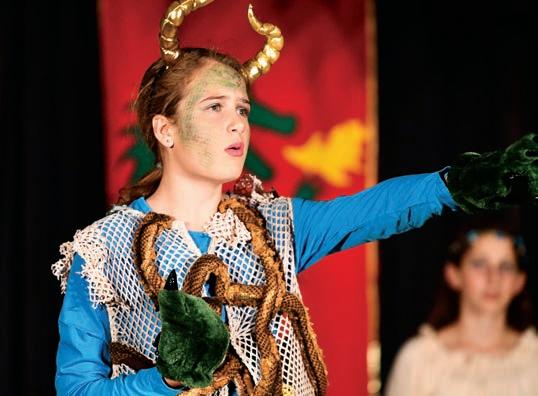
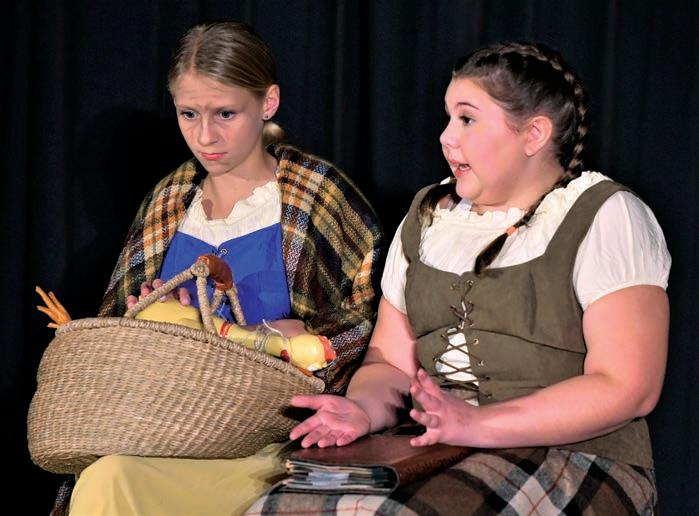
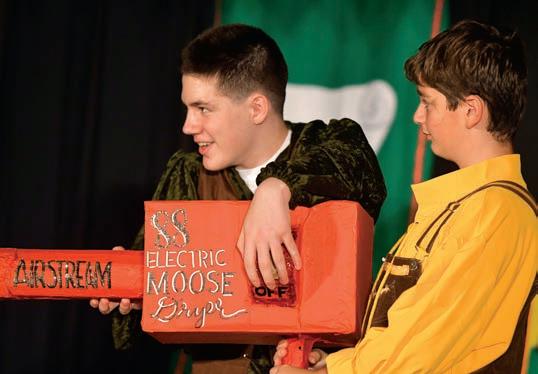




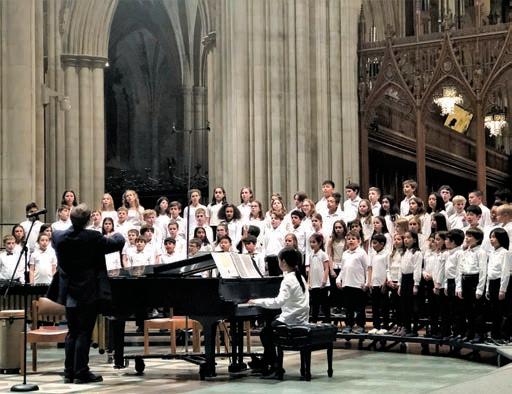
Thirteen Norwood students, along with faculty members Billy Vargas and Aafia Talib, participated in the Be Seen. Be Heard: Middle School Diversity Conference sponsored and hosted by The Center for Transformative Teaching & Learning at St. Andrew’s Episcopal School on January 30, 2020.
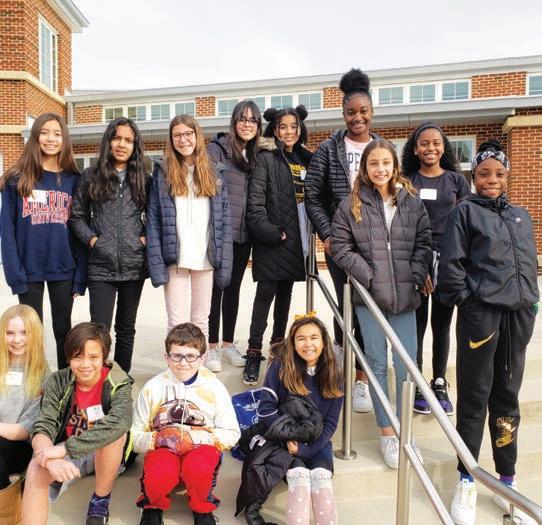
Now in its second year, the conference was established to give students in grades 6-8 a place where they can dialogue and learn about the important issues of diversity, equity, and inclusion, with the goal of helping students to deepen knowledge of themselves and others while learning to be allies. The conference is led by a team of experienced educators and facilitators from the Glasgow Group, including President Dr. Rodney Glasgow.
This year, more than 500 students from schools throughout the region gathered to explore the theme “The ReCycle of Oppression” by examining how core cultural identifiers impact experiences at school and in the world. Attendees focused their work through the lens of six steps of oppression:
n Fear of difference n Stereotype n Prejudice n Discrimination
n Internalized oppression n Institutional oppression
“I have never really talked about diversity, so this experience really opened so many doors for me. I just thought it was so incredibly amazing to have a place where they teach and share things about the evolving idea of diversity,” shared a Norwood student.
Another student added, “I thought it was a cool and different experience. I got to learn about other people’s experiences and points of views
on different topics. I looked from a different perspective and took in what they thought about a scenario and why they thought of it like that. I felt like I could relate to things that people were saying, but I also learned things that I wouldn’t think of.”
For many years at Norwood, fourth graders have presented a special chapel in January to honor and remember Dr. Martin Luther King, Jr. One by one, students would stand at a microphone to recite Dr. King’s iconic “I Have a Dream” speech. This year, however, fourth graders took a different approach and used the power of video to tell more of the story behind Dr. King’s work to end racial segregation and discrimination.
Back in November, fourth graders and their teachers traveled to
the Lincoln Memorial where each student stood on the steps in the exact spot where Dr. King delivered the speech during the March on Washington on August 29, 1963. Each student had memorized a portion of the speech and spoke with confidence, conviction, and emotion. The group then gathered at the MLK Memorial to see the granite statue and read the words on the Inscription Wall. The students and teachers also sat in small groups to reflect and share personal thoughts about Dr. King’s words.
The experience was captured in a ten-minute video produced by Norwood’s videographer Mike Haynes and fourth grade teacher Thenthia Taterway. The video was shown at an all-school chapel on January 24, 2020.
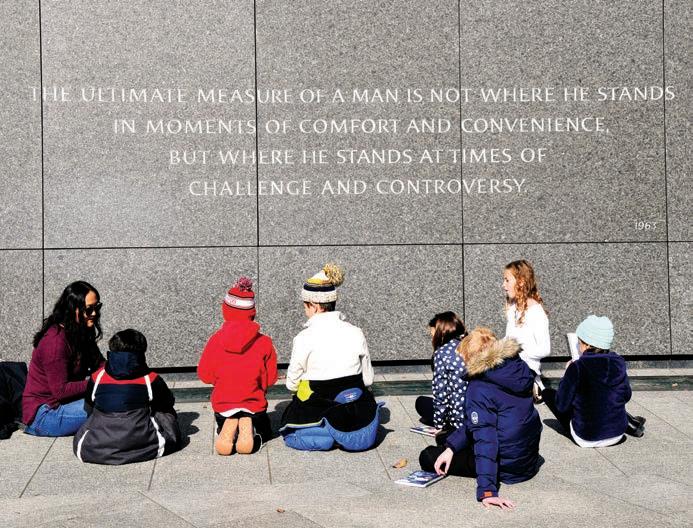
Norwood swimmers had a strong showing in the Washington Metropolitan Private Middle School Swim Championship meet held on January 25, 2020, at Holton-Arms School. The meet included 400 swimmers from 31 schools from around the Washington, D.C. area, nine of them being Norwood middle school students.
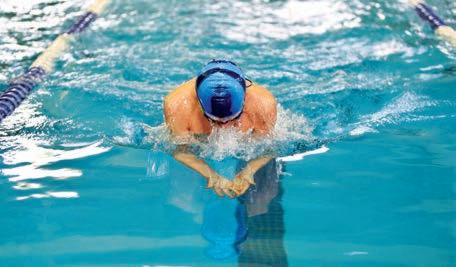
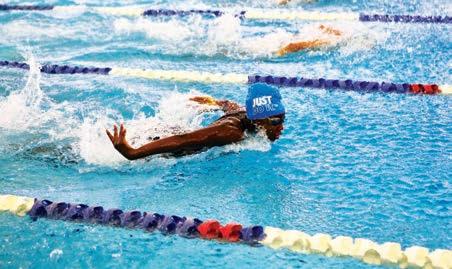
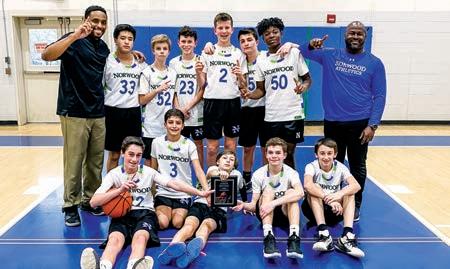
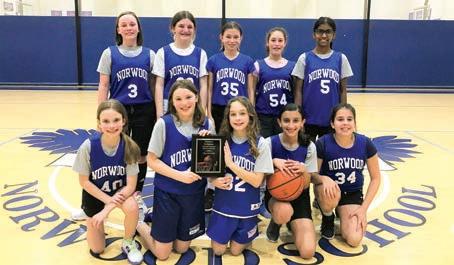
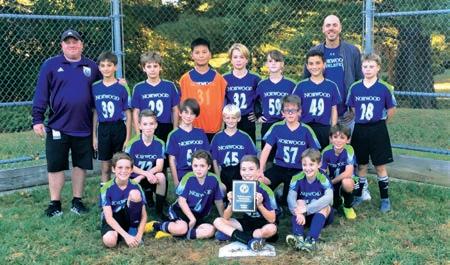
“While Norwood doesn’t have an established swim team, we do have a number of students who swim competitively outside of school,” explained Laini Bettencourt, physical education teacher and
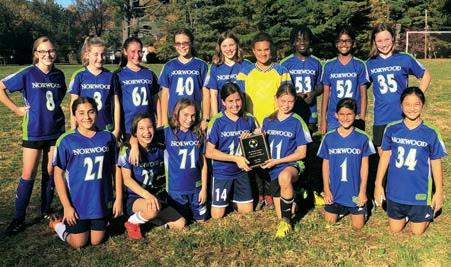
coach. “We are thrilled to be able to provide an opportunity like this for middle school swimmers to compete on behalf of Norwood.”
Norwood’s small but mighty group more than held their own against the competition. According to Coach Bettencourt, most of the swimmers clocked in personal bests. “Not only that, the boys placed sixth and the girls placed eighth out of 31 schools!” she reported. “I am so proud of this group. I am already looking forward to next year’s meet.”
1
“Galaxy
8. 3
February 23.
Once again, Norwood seventh and eighth grade girls did a great job competing in the annual STEM Challenge at Foxcroft School in Middleburg, Virginia. This year’s event, held Saturday, February 22, revolved around the space theme “Galaxy Trek.”
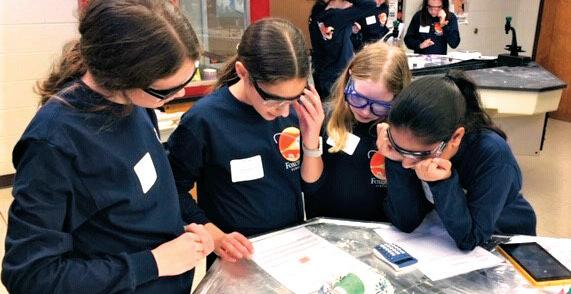
One Norwood team, the Quirky Quasars, placed first in the biology problem to determine bone density loss in astronauts; another Norwood team, the Glorious Galaxies, placed second in the chemistry problem, which involved creating a kibble substitute for “catstronauts.”
“I was really proud of the girls,” said Annette Matzner, middle school science teacher. “They worked hard throughout the day even though many of this year’s problems were noticeably harder and clearly aimed
toward the high school teams. They stuck with it and continued to try to do their best.”
More than 160 girls from area middle and high schools competed in the ninth annual event. They also enjoyed hearing from guest speaker Dr. Sandra Magnus, former astronaut and current deputy director for engineering within the Office of the Under Secretary of Defense for Research and Engineering.
In early January, the Norwood Robotics Club—comprised of the Blue Hawks and the Green Hawks teams—competed in a Maryland FIRST Lego League Qualifying Tournament at Rockville Science Center. According to Director of Technology Juan Ramirez, both teams performed well
with the Blue Hawks advancing to the Maryland State FLL Championship held on Sunday, February 23, at the University of Maryland-Baltimore County. “The Blue Hawks continued their excellent work at the state championship,” reports Juan. “They received great feedback from the judges in areas such as the innovation project, robot design, and core values. For their innovation project, the Blue Hawks received several exemplary qualifications.”
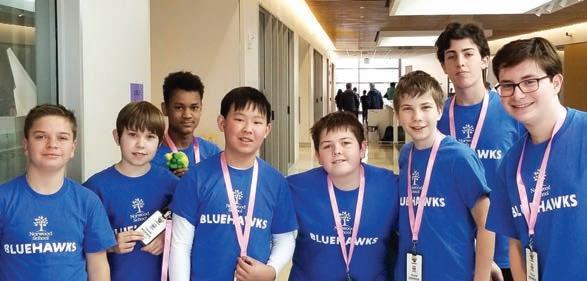
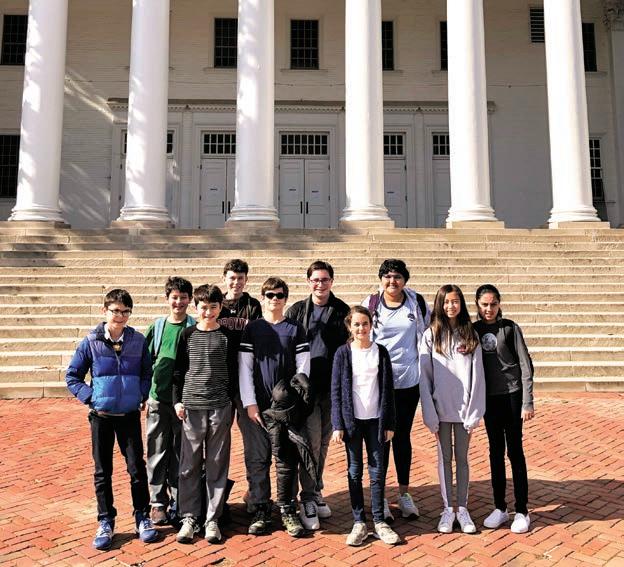
MATHCOUNTS is a national non-profit organization that aims to make learning math fun. The foundation believes that “middle school is a critical juncture when a love for math must be encouraged, and a fear of math must be overcome.” Norwood’s seventh
and eighth grade MATHCOUNTS participants were certainly fearless when they competed in the Chapter Competition at the University of Maryland in College Park on Saturday, February 8. According to middle school math coordinator and MATHCOUNTS coach Joelle Chall, the team worked diligently through challenging Sprint (focuses on speed and accuracy), Target (focuses on problem-solving and mathematical reasoning), and Team (focuses on problem-solving and collaboration) rounds. “All 10 participants earned a chapter certificate of merit for proven excellence. And a seventh grader, who was our top individual scorer, ranked in the top 30 percent of all participants,” said Joelle.
Norwood’s Middle School offers two competitive math teams: MATHCOUNTS for seventh and eighth graders and Math Olympiad for fifth and sixth graders. Both teams compete throughout the year.
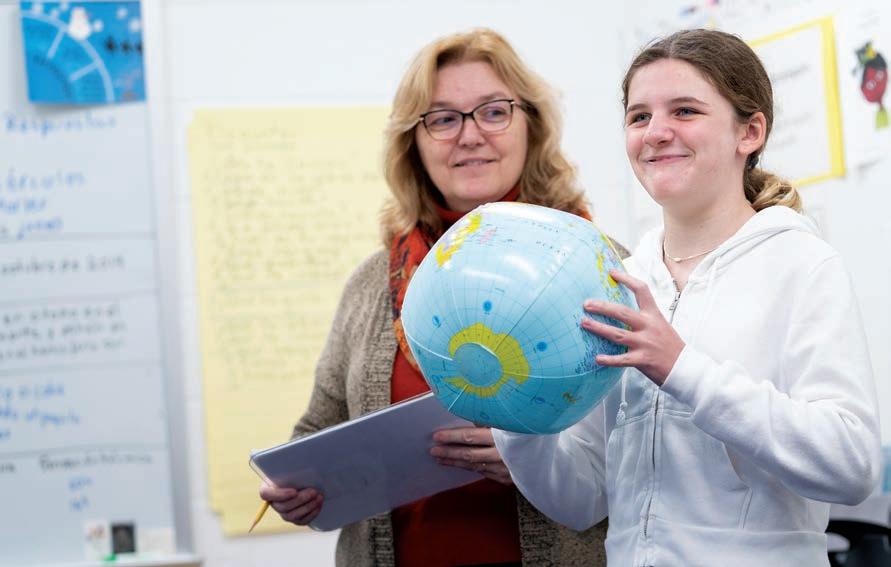
Norwood’s Spanish teacher Vicky Masson, who teaches third, fourth, and sixth grades, has been named to the 2020 cohort of HP Teaching Fellows. In this role, Vicky will be part of “Reinvent the Classroom,” a collaboration between Digital Promise, HP, Microsoft, and Intel.
According to Digital Promise, an independent, bipartisan nonprofit, the new cohort includes 26 educators from across the United States and Canada. These educators were selected for their excellence in powerful teaching and learning with technology, creating “deep, meaningful learning experiences for their students that are personal and accessible, authentic and challenging, collaborative and connected, and inquisitive and reflective.”
HP Teaching Fellows are part of a network of like-minded educators who deepen their understanding of powerful learning through free professional learning with Digital Promise. They support one another in the powerful use of HP and Microsoft tools such as exploring solutions to the United Nations’ Sustainable Development Goals through Minecraft, improving writing for emerging readers using Immersive Reader, and creating spaces for reflection using Teams and Flipgrid. HP Teaching Fellows also receive opportunities for networking, presenting, and sharing thought leadership at national conferences and through virtual events. By sharing what they’ve learned, they advocate for reinventing
Explore the Reinvent the Classroom initiative at: global.digitalpromise/ reinvent-the-classroom
the classroom and inspire others with their creativity and passion for this work. The HP Teaching Fellows share examples from their classroom through profiles, blogs, and Twitter using the hashtag #ReinventTheClassroom
“Vicky is a wonderful example of how Norwood teachers use technology to create powerful learning in our classrooms,” said Matthew Gould. “We are thrilled that she has this exciting opportunity to deepen her knowledge as an HP Fellow, and we look forward to enriching our program as she shares new ideas and resources.”
In late February, Matthew Gould announced the recipients of this year’s Henderson and Hudnut
grants, which are supported by two endowment funds established in the early 1980s. The Welles and Lucia Henderson Fund supports experiences that have a broad impact on student learning by enriching existing curricula or initiating new curricular options. The Thomas Hudnut Fund supports faculty enrichment and renewal. Congratulations to the 2020 recipients! We look forward to hearing about these exciting summer adventures next fall!
Middle School History Teacher
Travel through the American South, including Memphis and Little Rock, to visit major Civil Rights sites to enrich the American history curriculum.
Fifth
Travel to Athens and Crete to enhance the fifth grade
curriculum and teaching of ancient Greek civilization.
Chris Ward
Lower School Science Teacher
Travel to Iceland to explore and understand the geology of the region.
Marianne Guillaume
French Teacher
Aruba
Sally Morsy
Fifth Grade Teacher
Iceland
Fourth Grade
Hawaii
Lower School Math Teacher
Santa Fe, New Mexico
Grant awards are granted based on three criteria: (1) First time recipients; (2) Years of experience at Norwood; and (3) Impact on curriculum and practice (Henderson Grants).

Norwood by day is full of fun and engaging learning experiences. Turns out that Norwood at night is pretty fun, too! The theme for this year’s auction event, Norwood at Night, shined the spotlight on a fun party downtown at The Wharf, one of the city’s hottest destinations for entertainment. Nearly 300 parents, faculty, and staff members gathered on Saturday, February 8, at live music venue Pearl Street
Warehouse to celebrate Norwood School and to raise important funds for financial aid and professional development programs.
Through generous contributions from patrons and corporate sponsors, an online auction held the week before the event, and at the event itself, the Norwood community raised more than $230,000 for the school we love!
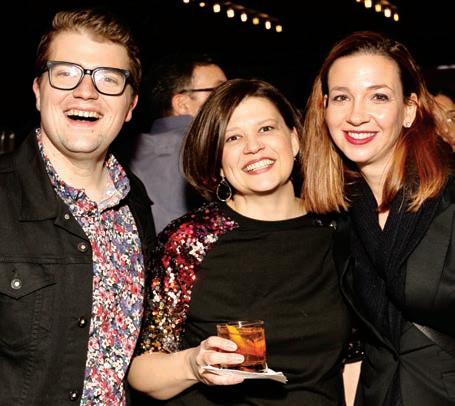
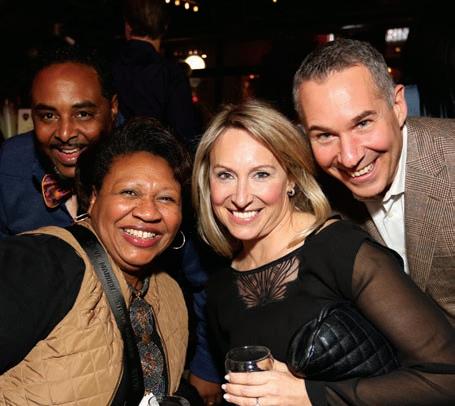

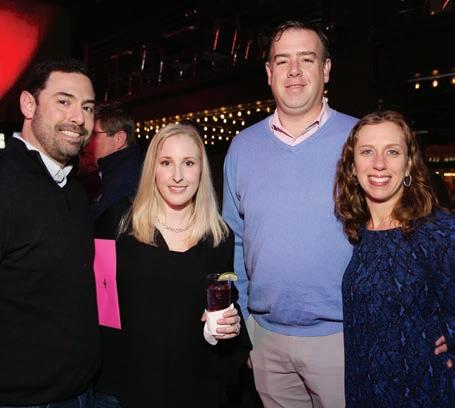
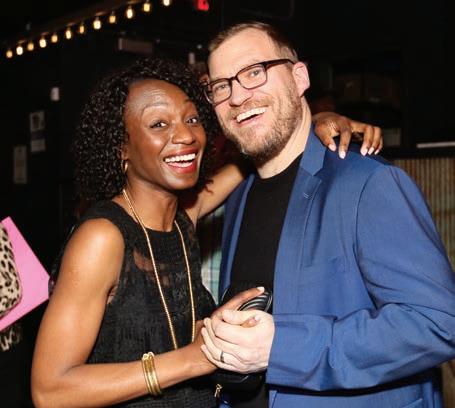
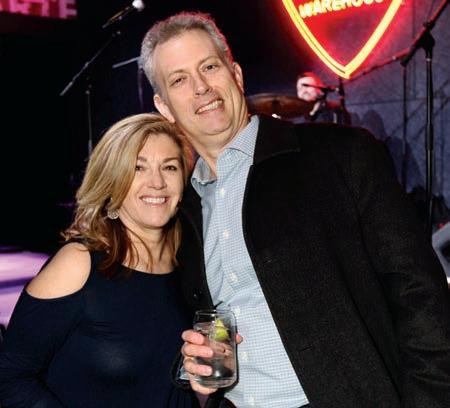
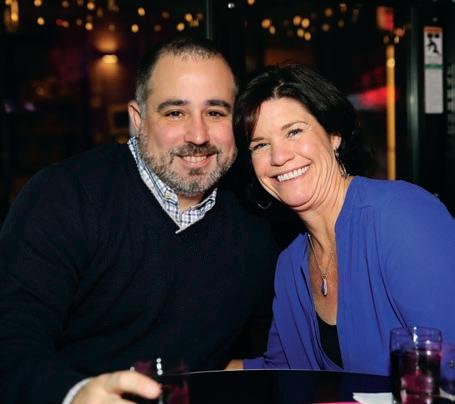

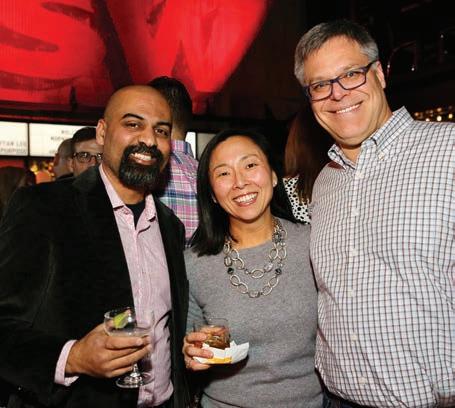

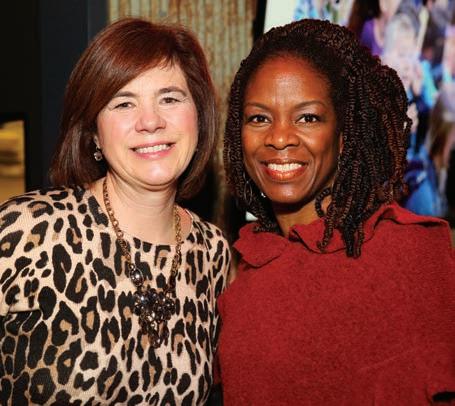

Nancy Brooks volunteers with the Arlington Neighborhood Village, the Master Gardeners of Northern Virginia where she is president of the board of directors, and St. Mary’s Episcopal Church where she chairs the Outreach Committee and serves on the Flower Guild. She joyfully travels with her husband, Nathan, to destinations like England, Uzbekistan, Scotland, Belgium, Norway, and Santa Fe for the opera! Nancy’s son, Nick, works
for Google and enjoys living in San Francisco where he brought his parents to Google’s Take Your Parents to Work Day.
Lucie Greer returned to Chevy Chase after 30 years in California. She is happy to be back and looks forward to reconnecting with her old friends.
Sara Biscoe is living on the Eastern Shore of Maryland in
Chestertown. She is studying at the Baltimore Jewelry Center and finding much joy and success with this endeavor.
Katie Mullen is the chief information officer of Neiman Marcus. She is also the proud mother of three fabulous children: Julia (six years old), Peter (three years old), and Thomas (almost two). Her mother wonders how she does it all and credits “Norwoodlearned time management!”
Caroline Mullen is a jewelry and pottery designer. She is the co-owner of Icarus & Co, a jewelry store on Nantucket and a successful online retailer. She started her business with a friend from Washington, D.C. after they moved to New York to pursue careers in fashion and art. Caroline is also a ceramic and mixed media artist.
Ashley Nobil and her husband, Jon, both graduated from Duke University and currently live
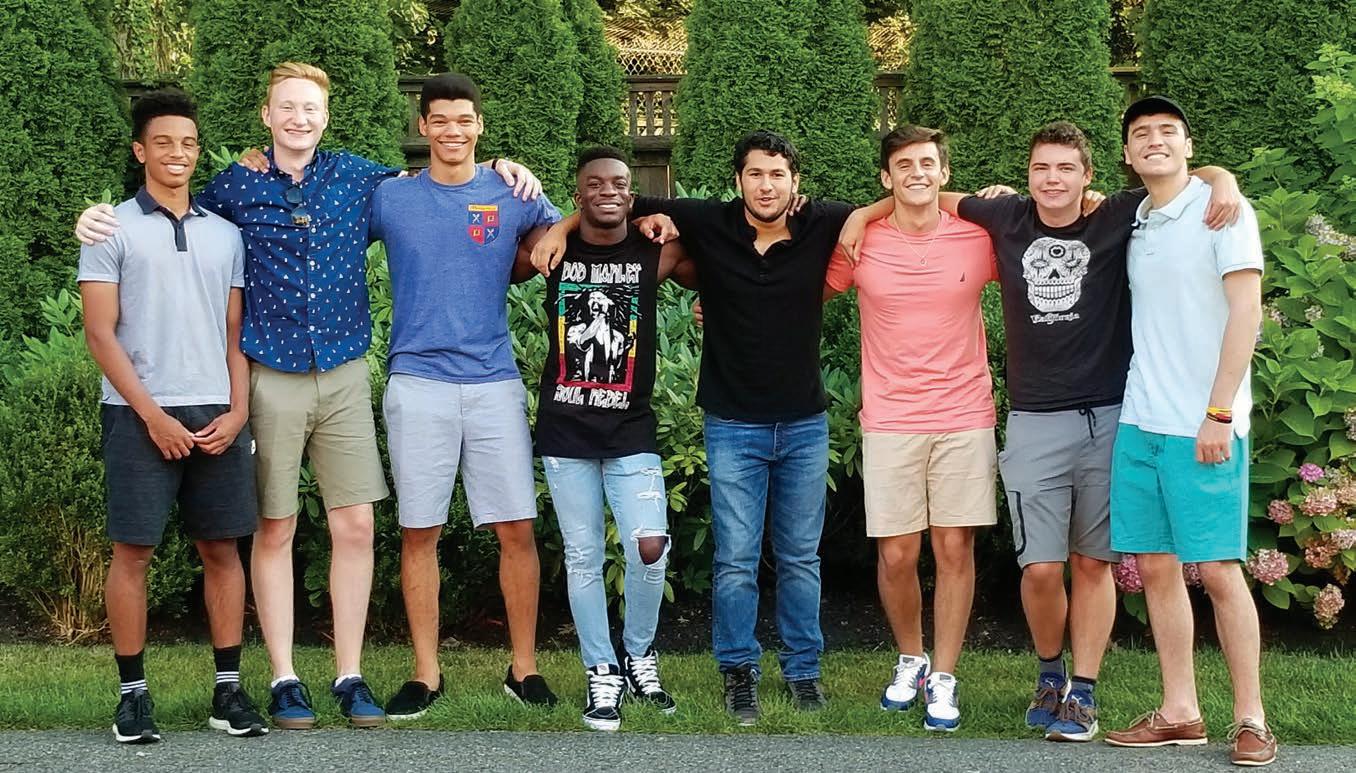
1 Aiden William Bernstorf, son of Lizey Korengold Bernstorf ’04. 2 Foster McCune ’13 is congratulated by his sisters, Maisie McCune ’08 (left) and Chloe McCune ’06, after his Georgetown team won the NCAA Division 1 Men’s Soccer Championship.
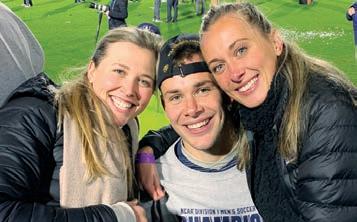
3 Caroline Mullen ’96 (left) and business partner Krys DeMauro in front of their jewelry store, Icarus & Co., on Nantucket.
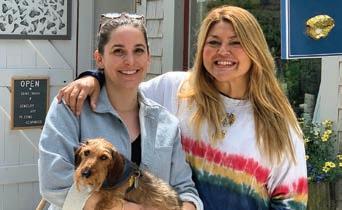
4 Wiley Marsteller ’07 married Madison Margeson on February 22 in Charlotte, North Carolina.
in Washington, D.C. with their baby daughter, Virginia Piper. Ashley works for a political fundraising group in support of Democratic senators and presidential candidates.
Jett Allen is a cartoonist and illustrator. Their comics and illustrations have appeared in The New Yorker and other places. You can check their work out at jettallen.com.
Eleanor Worthy Shepard and her husband, David, welcomed their first child, daughter Anne Marshall Shepard, in February. She surprised them by entering the world two weeks early—she already has them on their toes!
Marshall Strother is doing a fellowship in urology at Fox Chase Cancer Center in Philadelphia.
Lizey Korengold Bernstorf and her husband, Stephan, welcomed their son, Aiden William Bernstorf, on February 27, 2020.
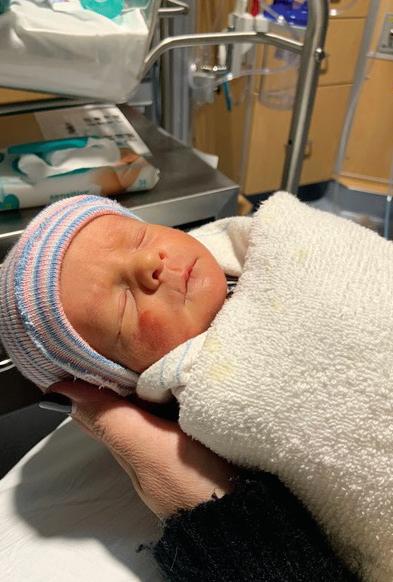
Ari Opsahl and his family have moved back to Denver. He left California and Anheuser Busch to join an Artificial Intelligence startup called Plutoshift. Ari is the director of business development.
Evan Strother is finishing his MBA at Wharton Business School at the University of Pennsylvania and will then return to McKinsey and Company in San Francisco, which serves a wide variety of industries, including financial services, healthcare, high tech, and energy.
Wiley Marsteller married his college sweetheart, Madison Margeson, on February 22 in Charlotte, North Carolina. Several Norwood alumni and past parents were in attendance, including Wiley’s sister Emily Marsteller
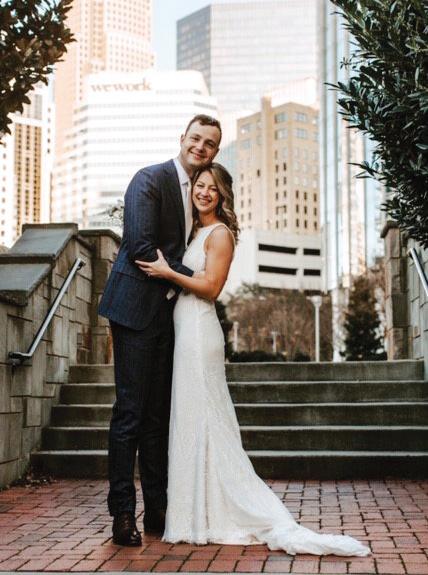
’09, Robbie Heartfield ’07, Betsy and Patrick Turley P’06 ’09 ’14, Amy and Bob Vieth P’05 ’07, Bradley Clements and Jon Moore P’06 ’07, as well as Wiley’s sixth grade teacher Carol Tyler
Scott Melby lives in lower Manhattan and works for a hotel development firm.
Andrew Smith lives in Washington, D.C. with Norwood classmate, Matthew Perlmutter. He works at Clark Construction with two other classmates, Mary St. John and Andrew Reitzes No wonder they are consistently recognized as the D.C. area’s top builder!
Quinn Moslander is in her first year of law school at UC Hastings College of the Law in San Francisco. Her dad, former Norwood Dean of Curriculum Frank Moslander, jokes that Quinn is enjoying living a few miles away from home because “we would cramp her lifestyle.”
Ellie Gill recently completed a yearlong photography internship at Annie Leibovitz Studios in New York City. She is now an intern in the photography department of Saturday Night Live at NBC. Ellie is also studying for a BFA in photography and video at the School of Visual Arts (SVA).
Gretchen Poston works as an intern at the State Office of Senator Tammy Baldwin in Madison, Wisconsin. She works with the grants coordinator and supports her by drafting grant letters and writing letters of support for applicants. She also mans the phones and speaks to constituents about their concerns and offers Senator Baldwin’s positions and services. Until last December, she worked as an intern for University of Wisconsin professor and author, Doug Bradley, on his new book Who’ll Stop the Rain, which explores the relationship between Vietnam War veterans and the music of their era. Gretchen was heavily involved in researching the Vietnam War, reviewing and selecting interviews with veterans, and editing chapter drafts. She graduates from Wisconsin this spring.
Foster McCune is a junior on Georgetown University men’s soccer team, which won the 2019 College Cup Final against University of Virginia. Numberthree ranked Georgetown defeated number-one ranked University of Virginia. Foster’s team made history winning the 2019 NCAA Division I National Championship at WakeMed Soccer Park in Cary, North Carolina. The game ended in a 3-3 tie after 110 minutes of play and then went to penalty kicks where Georgetown got the 7-6 win to give the men’s soccer program its first national championship.

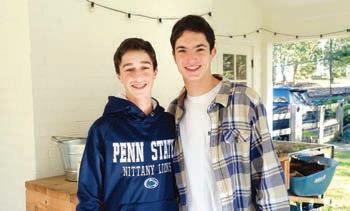
Delaney Moslander is a junior at Boston University. She spent the first semester of this year studying in Dublin, Ireland. She is focusing on becoming a pediatric occupational therapist.
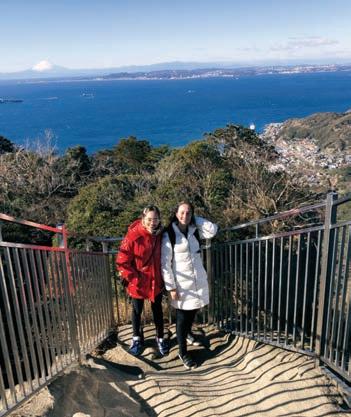
Maggie Atwood was back on Norwood’s campus assisting Summit instructor Gerry Barrs with class activities and outings.
Ceci Gichner’s Bates College women’s ice hockey team defeated Union College in the IWHCL Adirondack Division
Championship in an overtime 3-2 win. She is enjoying her sophomore year at Bates as a geology major, focusing on glaciology. She just can’t get away from the ice!
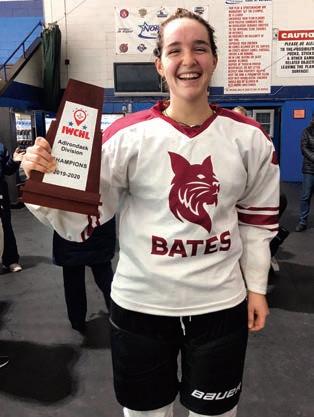
Julia Curran is enjoying her first year at Haverford College in Pennsylvania pursuing a degree in computer science. She is a midfielder on the women’s lacrosse team and is very excited for the upcoming season.
Alexa Drescher is a now a sophomore at Boston University thanks to credits from her AP classes at The Potomac School. She spent two summers studying in Tokyo with the Education First program. She lived with a Japanese family, whom she just visited over her winter break. Alexa is studying Japanese, Korean, and Chinese at BU, in addition to taking business classes.
Ade Jones is in his first year at Temple University in the Tyler School of Art and Architecture. He is studying graphic and interactive design. He enjoys exploring the city of Philadelphia and meeting new people from a variety of diverse backgrounds. Over the holiday break he was
1 Ceci Gichner ’14 after a championship win for the Bates College women’s ice hockey team. 2 Joey Miller ’15 with his brother and current Norwood eighth grader, Jamie Miller. 3 Daniel Lustbader ’18, Riley Herron ’18, Jack Holland ’18, Nathan Wohlstadter ’17, and Liam Herron ’16 returned to campus to judge the Norwood Debate Tournament on February 1. Norwood hosted one of the biggest tournaments of the season with 80 teams from 12 different schools. 4 After spending two summers studying in Tokyo, Alexa Drescher ’15 recently returned to Japan to visit with her host family. 5 Dylan Strother ’15, a student at the University of Oregon, celebrates the Ducks’ win at this year’s Rose Bowl Game. 6 Current middle school English teacher Aafia Talib (right) ran into two former Norwood teachers, Kim Allen-Washington (left) and Jenny Kim, at the NAIS People of Color Conference held in early December in Seattle. 7 Matthew Gould hosted the annual Former Faculty and Staff Luncheon on December 5. This year, guests were treated to a panel of Student Advisory Council members, who kept them up to date on the exciting events of the school year and answered many questions. Our returning faculty and staff also enjoyed a special glimpse of the future of Norwood with a video fly-through of the highly anticipated Marriott Early Childhood Building. Back row, left to right: John Schmidt, Judy Collishaw, Susie Rosenbaum, John Currie, Jay Roudebush. Front row: Matthew Gould, Nancy McGuire, Molly Heylin, Jan Molnar, Jane Katz, Shirley Miller.
able to spend time with his fellow classmates from Class of 2015: Andrew Stephens, Christian Lostoski, Raphy Conrad, Eshan Alamdeen Shahzada, Gabe Pereira, John Modelfino, and Milan Yazhary
James Klusaritz has had a great first semester at University of Pennsylvania. This summer he will be doing an internship at a Washington, D.C.-based management consulting firm that primarily provides services to various agencies of the federal government including the Department of Defense, the Treasury Department, and Health and Human Services. James is the only first-year college student the company hired for their summer internship program, typically taking only third- and fourthyear college students.
Joey Miller is a first-year student at Pennsylvania State University. He is a journalist for The Daily Collegian, Penn State’s studentproduced newspaper. He is covering sports and has written and published several articles already. He covered women’s volleyball last semester and women’s softball this spring. He hopes to cover basketball and football by junior or senior year.
Nicholas Polansky is taking a gap year and volunteered on presidential candidate Pete Buttigieg’s campaign in New Hampshire this past fall. This spring, he has an internship in the German Parliament. He will start at the University of Chicago in the fall of 2020.
Dylan Strother is in his first year at the University of Oregon. He is having a great year and even
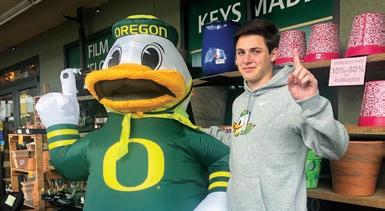
had the chance to go to the Rose Bowl in Pasadena, California, with his brother Nick Strother ’11 to enjoy the Oregon Ducks’ win over the University of Wisconsin.
Liam Moynihan was the United States’ winner in the Sony World Photography Awards Youth Competition. The Sony Youth category celebrates the “best single image by emerging photographers aged between 12-19 years old.”
Will Norry graduates this spring from Durham Academy in North Carolina. He is a 2020 National Merit Scholar and is headed to Grinnell College in Iowa where he will continue to pursue his passions: Spanish, economics, teaching, ultimate frisbee, and rock climbing.
To include your news in the next Norwood Magazine, please send your information to Sandra Gichner, Alumni Associate, at sgichner@ norwoodschool.org. Photos (JPG, 1MB+) are encouraged! The deadline for Class Notes in the fall issue is October 1, 2020.
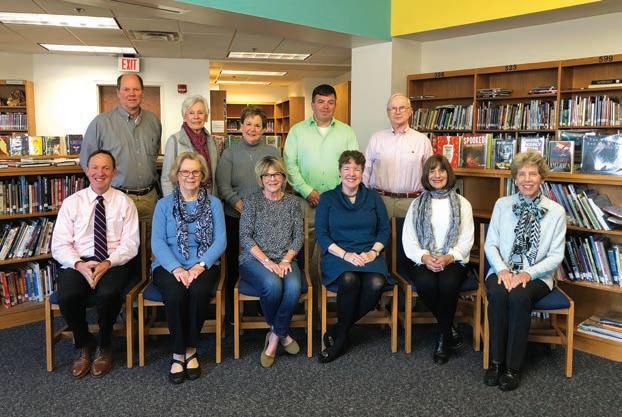
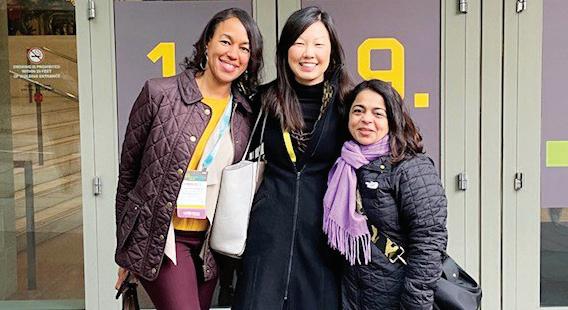
Be part of the largest philanthropic year in Norwood School history!
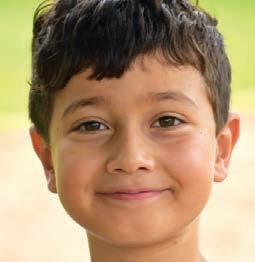
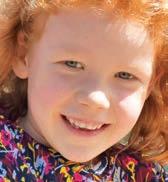


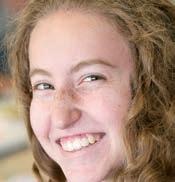
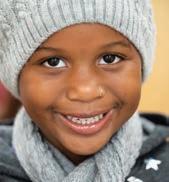
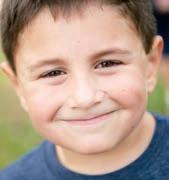

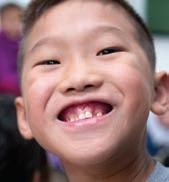
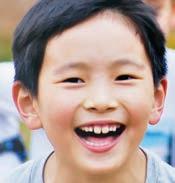
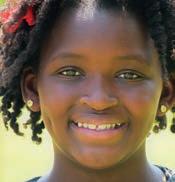

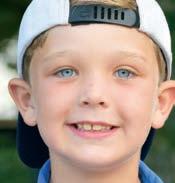
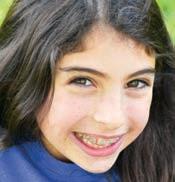
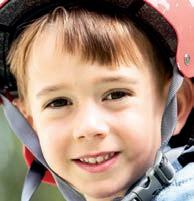

We celebrate the generosity of you—our community. It is because of you that we have made great strides in reaching our fundraising goals. We are almost there! This year will close out philanthropic initiatives that have spanned the past several years—the largest initiatives in Norwood’s history. We can achieve this together if we are “all in” for Norwood.
Be part of the story and join us with contributions to The Norwood Fund and Campaign. Together, we can be #ALLINFORNORWOOD.







If you are receiving multiple copies of the magazine, please contact the Development Office at 301-841-2205 or developmentoffice@norwoodschool.org.
While this photo might look like it was taken during an art class, it was actually taken during a pre-kindergarten science class as students experimented with paint to learn about gravity. Messy, yes. Fun, absolutely!
